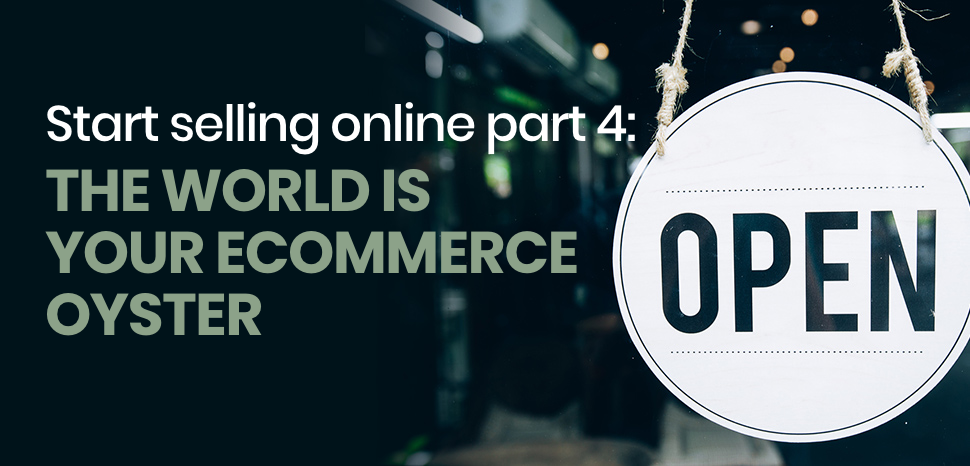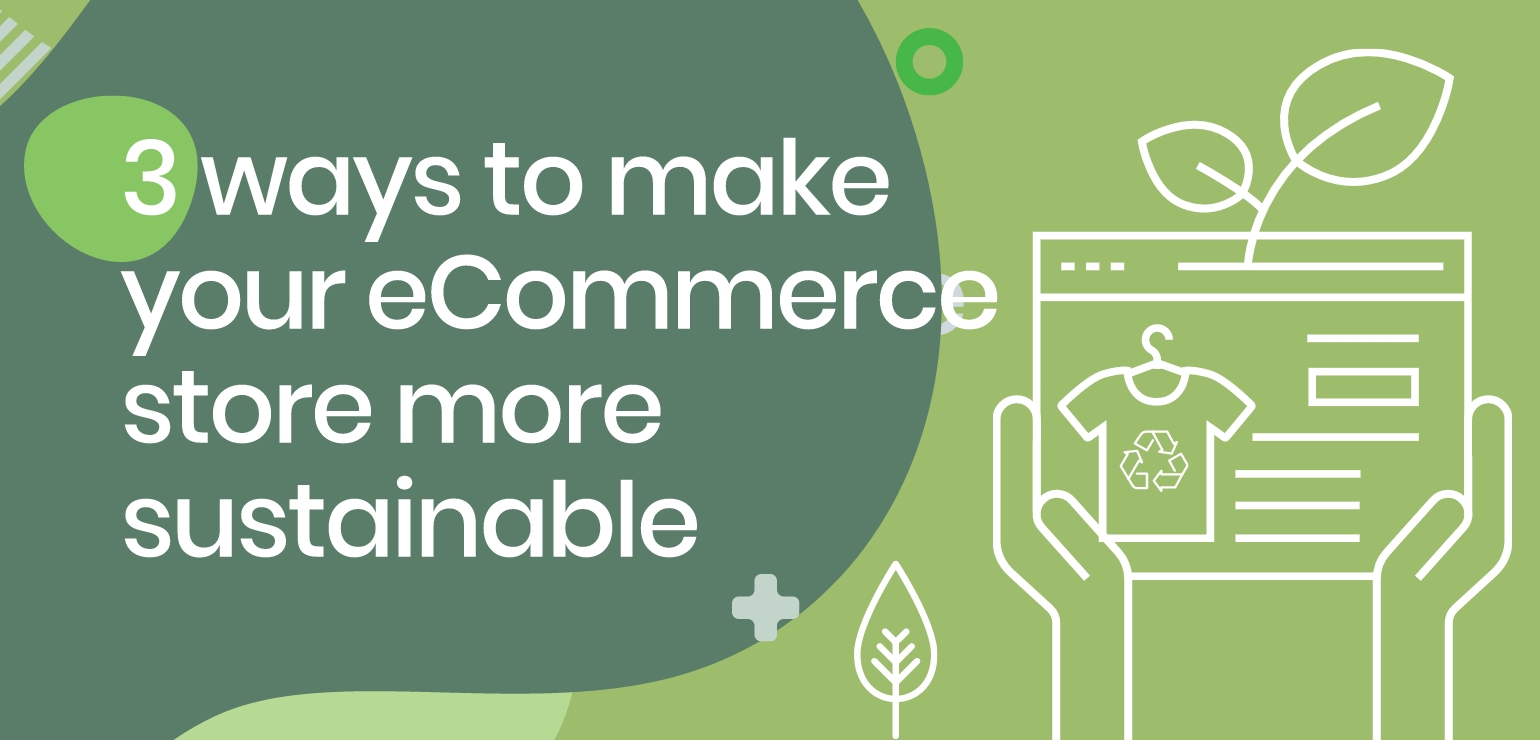Ready to open to the world?

Article topics
- Considering the global market
- Localisation
- Speaking the language
- Respecting the culture
- Local knowledge
- Social media
- Taking payments
- International shipping
- Final thought
Is your retail business missing out on cross border sales? It’s never been easier to start trading online, connect with international consumers and tap into your global marketplace.
The great thing about eCommerce is that it enables brands and businesses to reach global consumers. Opening up to markets in foreign territories can significantly increase revenue and expose your brand to a much wider audience.
Considering the global market
In much the same way as when starting a UK only eCommerce business, when you decide to go global it pays to conduct research into international markets to ensure that there is sufficient demand for your products.
The chances are that if your products are popular in the UK, then there will be demand in anglophone and European countries. Countries with different cultures and political systems might take some extra research, such as China or some Middle Eastern countries.
An opening strategy for selling cross border is to choose one country to focus on initially, to get a feel for how your business will manage trading internationally, and then as business grows, gradually move into other regions. This will enable you to iron out any creases in your strategy and operations, ensuring that as your business grows, international customers are enjoying consistently outstanding shopping experiences.
71% of UK based online retailers have international customers.
Localisation
As your eCommerce business grows, there are practical considerations and decisions to be made about your webstore and how it will be perceived by international consumers. Your webstore is your shop window to the world, and as such your content should be tailored for and appeal to your target customers in each of the territories that you trade in.
Your webstore should be tailored for local consumers; it should be in local language for maximum engagement; it should reflect local culture; it should offer global payment methods and shipping options should be clear and transparent.
Speaking the language

Ensuring that your webstore is available in the languages of the countries where you trade is vital for consumer engagement. It would be a costly mistake to assume that people will be able and willing to speak English.
The simplest way to ensure that webstores render in the appropriate language(s) for your trading regions is to use a single-site approach. This is a single webstore with a frontend application that machine translates all of the text on your webstore pages.
Machine translation might be fine for general text, such as your About page or shipping options. But more conceptual marketing copy often needs a more nuanced approach and a human touch. Different cultures not only speak in a different language, but also have different cultural references and idioms, increasing the potential for embarrassing ‘lost in translation’ mistakes.
Employing a human translator will help you effectively communicate your brand and product messages via your webstore and written marketing collateral. Professional localisation services can provide translation that will work well for any language in the world, as well as providing additional cultural considerations.
Your business goals will inform whether you use a single-site approach or opt for multiple, region-specific versions of your webstore, which is more expensive to develop and maintain—it will depend on the size of your business and your intended global reach.
UK fashion retailer Asos, an early mover into foreign markets, today generates over 40% of online sales internationally.
Respecting the culture
Every country that you trade in has its own distinct culture or cultures. It’s crucial that your webstore content and marketing collateral reflects this so that it appears familiar and engaging, to avoid unintentionally alienating local consumers, or even causing offence.
Accurately representing different ethnic groups and respecting the culture of different regions is vital. For example, if you were to trade in China, then it would be hugely beneficial for your webstore content and marketing to depict Chinese people. The same applies in many Middle Eastern countries, webstore and marketing collateral should broadly reflect Islamic tradition.
The goal for translation and cultural localisation is to offer international consumers a shopping experience that is as close as possible to local eCommerce businesses, in order to optimise UX for more outstanding shopping journeys.
A localised webstore and local marketing collateral should reflect the culture and values of the consumers that it wishes to engage.
Local knowledge
Ensuring that your cross-border content and collateral uses appropriate conventions will help maximise consumer engagement. Using the right date format, weights and measures and currency units can mean the difference between keeping a consumer engaged and unnerving them with unfamiliar and unexpected content. For example, using imperial measurements and the mm/dd/yy date format in the US or avoiding the thumbs up gesture in China and South East Asia as it is considered to be rude.
Leveraging local knowledge for marketing strategy and campaign will help your international marketing efforts make an impact. Acknowledging local holidays and festivals will add to the local feel of your brand and webstore. Knowing something as simple as what the weather is like in different regions might inform your content, depending on your products of course.
Showing local knowledge in your webstore content and marketing materials helps to build trust with international consumers.
Social media

Engaging with and growing your international audience using social media is a great way to get your messages out there and build your global brand. But to do this in multiple languages would be very resource consuming and probably just isn’t practical. However, if you find that your eCommerce business gains traction in a particular foreign language region, social media engagement might be worth considering for that region alone.
Taking payments
Generally speaking, payment gateways make taking international payment via your webstore fairly straight forward. Payment services such as PayPal or Apple Pay automatically convert currency and offer international customer some safeguards.
If you are selling in many different countries then local consumption tax (VAT in the UK, GST in Australia etc.) can seem like a complicated proposition. However, most countries will have an import threshold for their consumption tax and as long as your annual revenue in that country remains below the threshold then you won’t have to pay it. If you do break the tax threshold then you will be liable to pay tax on sales above it. EU countries tax thresholds vary and may change post Brexit.
If you were selling into Australia, then the threshold before tax registration is AUD 75,000 (£41,000)* and in China it’s CNY 100,000 (£11,500)*. If your business is likely to exceed consumption tax thresholds, then seek advice from your accountant or your webstore provider.
Transaction fees will be imposed on cross border payments, typically at 1.5%, although this varies across payment services.
International shipping

One of the most important components of your cross border selling strategy is shipping. It’s important to find a shipping method that works for your business as there are different approaches available and a variety of methods, speeds and rates that you can consider offering to customers. Whichever delivery methods you choose to offer, it’s important to be transparent about cost and delivery time to avoid price shock and shopping cart abandonment.
Some countries will prohibit certain products and others might limit them. Understanding the rules and regulations that exist in different regions and which of those rules and regulations may impact your customer orders can ensure smoother end to end order fulfilment.
UPS offers a useful tool that shows country-specific rules and regulations by origin and destination countries.
It might seem obvious, but make sure that you check that your products are allowed to be shipped to a buyer’s country. Weight and size limits often vary by destination. For example, if you ship Royal Mail, you can send books that weigh up to 5kg, but not to Canada, where no shipments can exceed 2kg.
And there are certain product categories that some couriers will not transport internationally: you can’t send postage stamps or higher value watches to another country via UPS, and you can’t ship playing cards or saccharine to Greece, or send clocks to Italy, strange as that might sound.
Final thought
It’s easier to conduct global business today than it has ever been. By creating a webstore that offers international consumers outstanding shopping experiences, in their own language, reflecting their culture and values and showing your products and shipping costs in their currency, you will create many loyal customers around the world.
Do you want to start selling online? Or maybe you already have a webstore and need help expanding into international markets? If you would like help or advice about creating an international webstore, then get in touch today for a chat with one of our eCommerce experts.
*Correct at time of publication.


 Back
Back
